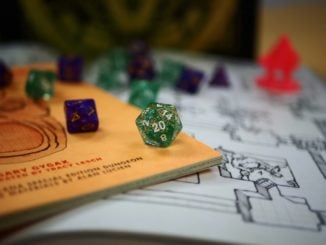
Welcome to the Blade Ward spell breakdown! Here, we will go over the pros, cons, and situational uses for this Cantrip. While this is not our favorite spell, it is worth considering its pros and cons. Let’s jump right into our Blade Ward 5E Guide!
Blade Ward
- School: Abjuration
- Level: Cantrip
- Casting Time: One Action
- Range: Self
- Components: Verbal, Somatic
- Duration: One Round
- Classes: Bard, Sorcerer, Warlock, Wizard
Until the end of your next turn, you have resistance against bludgeoning, piercing, and slashing damage dealt with weapons.
Pros
If you are casting this spell, odds are pretty good that your character leans towards the squishy end of the sturdy spectrum. So the last thing you want to do is get involved with some melee combat. That is where Blade Ward comes in! You can cast Blade Ward repeatedly and let your party mates do the heavy lifting!
Sure, you can cast a spell that can deal damage, but if all of your spells require you to roll for a Ranged Spell Attack, you will be rolling with a disadvantage AND you will be open to a melee attack that could kill you! When you are rolling with a disadvantage, you roll two dice and use the lowest of the two results. To make a Ranged Spell Attack, use the following formula:
1d20 + Your Spellcasting Modifier + Your Proficiency Bonus
You could also use a spell that requires you to touch your opponent, but that would require you to get EVEN CLOSER to them, which is clearly crossing a line that your squishy character with a low hitpoint count does not want to do.
Luckily, Blade Ward is a Cantrip that requires no materials to cast! Being a Cantrip means that you do not have to use a spell slot in order to cast Blade Ward. That means you can cast Blade Ward every turn as your action, and it will keep your character safe.
Cons
Relying on Blade Ward to keep you safe will take you out of the equation altogether when it comes to melee combat. Those extra actions that you are using to protect yourself can be used to help your team defeat the enemy that they are trying to defeat. Remember, using Blade Ward requires you to use an action, which means that you cannot do anything else the turn that you cast it. So casting it every turn just to protect yourself from harm will take you out of the combat.
And it might not even take you completely out of harm’s way! Blade Ward will only affect physical damage from a weapon. So your opponent could cast a Flame Blade and hit you with that weapon because it is no longer dealing bludgeoning, piercing, and slashing damage. It is now dealing fire damage! That is not a hot option!
When Should You Use Blade Ward
Blade Ward has one specific use – to protect your squishy character from taking any bludgeoning, piercing, and slashing damage. That means you should use it right as you are at the cusp of dying in the middle of melee combat. And even then, you might not be safe! But when you have a situation spell, you need to keep that specific situation in mind so you can use it. There is no reason to waste a spell slot, and you can almost guarantee that your Dungeon Master will put you in a spot to use Blade Ward if your character learned how to use it.
When Better Options Are Available
There are SOOOO many better options than Blade Ward. For one, you can use a spell that deals damage via Spell Attack Damage. When making one of these attacks, you will use the same formula that I presented above for the Ranged Spell Attack. The major difference is that you will not be rolling with a disadvantage. You have the following options:
- Booming Blade (Cantrip Sorcerer, Warlock, Wizard) that can deal an additional 1d8 damage with your melee attack. Damage increases at levels five, eleven, and seventeen.
- Faithful Hound (Fourth level Wizard) creates a phantom dog that can deal 4d8 piercing damage. Damage increases by 1d8 per extra level you have.
- Green Flame Blade (Cantrip Sorcerer, Warlock, Wizard) that can deal 1d8 fire damage to another target. Damage increases at levels five, eleven, and seventeen.
- Shocking Grasp (Cantrip Sorcerer, Wizard) that deals 1d8 lightning damage to a target you touch. Damage increases at levels five, eleven, and seventeen.
- Vampiric Touch (Third level Warlock, Wizard) deals 3d6 necrotic damage that can heal your character. Damage increases by 1d6 per extra level you have.
You could also try to find the space to step back and cast a Ranged Spell so you do not have to roll with a disadvantage. That might be the better option as you will not have to keep your character close to the enemy that you are fighting. Any chance you can take to get your spellcasting character away from melee combat you can take, you should do it.
That wraps up our Blade Ward 5e Guide. Need more spells to fulfil your thirst for knowledge? Check out our Light 5E guide!




Unarmed strikes are bludgeoning damage unless otherwise specified. It’s in the combat section of the DMG.
Good catch, thanks.